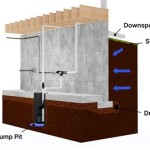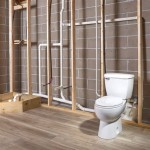What Humidity Should a Basement Be?
Humidity is a measure of the amount of water vapor in the air. It is expressed as a percentage of the maximum amount of water vapor that the air can hold at a given temperature. The ideal humidity level for a basement is between 30% and 50%. Higher humidity levels can lead to condensation, mold, and mildew, whereas lower humidity levels can cause dry skin, itchy eyes, and respiratory problems.
Effects of High Humidity
High humidity levels in a basement can lead to a number of problems, including:
Condensation:
When the air in a basement is too humid, it can condense on surfaces such as walls, floors, and windows. This can lead to water damage and the growth of mold and mildew.Mold and mildew:
Mold and mildew thrive in humid environments. They can cause health problems such as allergies, asthma, and respiratory infections.Musty odors:
High humidity levels can also cause a musty odor in a basement. This odor is caused by the growth of bacteria and mold.
Effects of Low Humidity
Low humidity levels in a basement can also cause problems, including:
Dry skin:
Low humidity levels can cause dry, itchy skin. This can be especially uncomfortable during the winter months.Itchy eyes:
Low humidity levels can also cause itchy eyes. This is because the tears that lubricate the eyes evaporate more quickly in low-humidity environments.Respiratory problems:
Low humidity levels can also irritate the respiratory system. This can lead to coughing, sneezing, and difficulty breathing.
How to Measure Humidity
The best way to measure humidity is to use a hygrometer. A hygrometer is a device that measures the relative humidity of the air. It is important to place the hygrometer in the center of the basement and away from any sources of heat or moisture.
How to Control Humidity
There are a number of things that you can do to control the humidity in your basement, including:
Ventilation:
The best way to control humidity is to ventilate the basement. This can be done by opening windows and doors, or by using a fan or dehumidifier.Dehumidifier:
A dehumidifier is a device that removes moisture from the air. Dehumidifiers are available in a variety of sizes and capacities, so you can choose one that is right for your basement.Air conditioner:
An air conditioner can also help to control humidity. Air conditioners remove moisture from the air as they cool it.
Conclusion
The ideal humidity level for a basement is between 30% and 50%. Higher humidity levels can lead to condensation, mold, and mildew, whereas lower humidity levels can cause dry skin, itchy eyes, and respiratory problems. By following the tips in this article, you can control the humidity in your basement and create a healthier and more comfortable environment.

Dehumidifier Setting Chart What Should Be Set At

Moisture In Basements Causes And Solutions Umn Extension

How To Achieve An Ideal Basement Humidity Of 30 50

How To Achieve An Ideal Basement Humidity Of 30 50

How To Lower Your Basement S Humidity Level

Overview Dehumidification In The Basement Or Crawl Space

Relative Humidity Why You Need To Understand It News And Events For Basement Systems Inc

How To Lower Your Basement S Humidity Level

Basement Humidity Potential Damages How To Get Rid Of It

Ideal Basement Humidity And How To Achieve It Epp Foundation Repair








